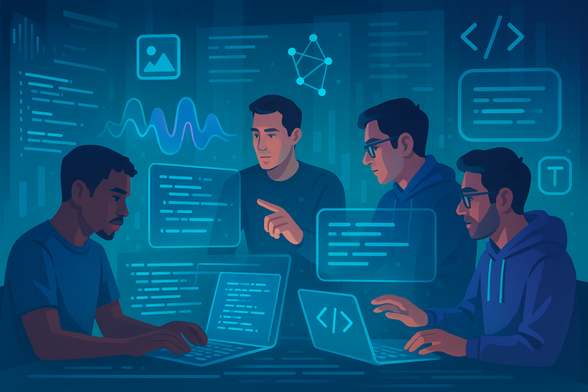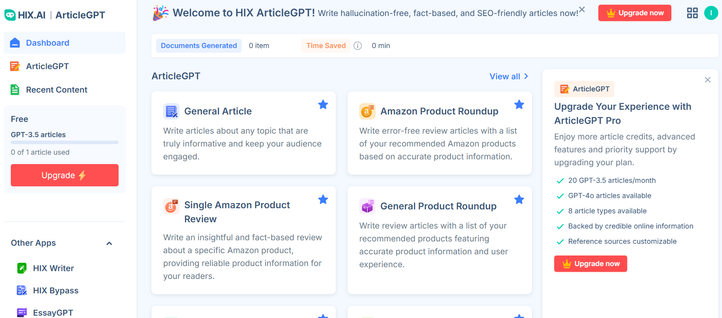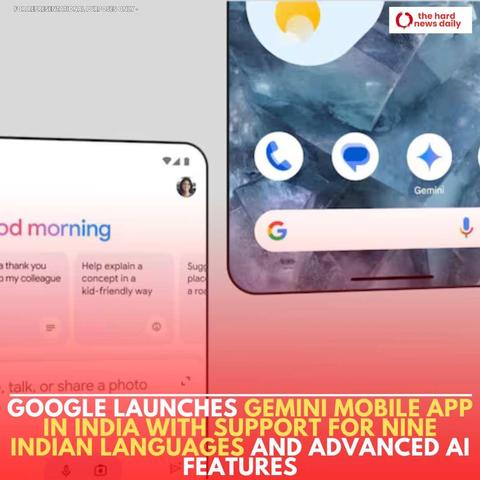Unlocking the Power of Gemini AI: Your Edge in Building Next-Gen Applications
2,684 words, 14 minutes read time
The world of artificial intelligence is in constant flux, a dynamic landscape where breakthroughs and innovations continually reshape our understanding of what’s possible. Within this exciting domain, the emergence of multimodal AI models represents a significant leap forward, promising to revolutionize how we interact with and build intelligent systems. Leading this charge is Google’s Gemini AI, a groundbreaking model engineered to process and reason across various data formats, including text, images, audio, video, and code. For developers, this signifies a paradigm shift, offering unprecedented opportunities to create richer, more intuitive, and ultimately more powerful applications.
Gemini AI isn’t just another incremental improvement; it’s a fundamental reimagining of how AI models are designed and trained. Unlike earlier models that often treated different data types in isolation, Gemini boasts a native multimodality, meaning it was trained from the ground up to understand the intricate relationships between various forms of information. This holistic approach allows Gemini to achieve a deeper level of comprehension and generate more contextually relevant and nuanced outputs. Consider the implications for a moment: an AI that can seamlessly understand a user’s text description, analyze an accompanying image, and even interpret the audio cues in a video to provide a comprehensive and insightful response. This level of integrated understanding opens doors to applications that were previously confined to the realm of science fiction.
The significance of this multimodal capability for developers cannot be overstated. It empowers us to move beyond the limitations of text-based interactions and build applications that truly engage with the world in a more human-like way. Imagine developing a customer service chatbot that can not only understand textual queries but also analyze images of damaged products to provide immediate and accurate support. Or consider the potential for creating educational tools that can adapt their explanations based on a student’s visual cues and spoken questions. Gemini AI provides the foundational intelligence to bring these and countless other innovative ideas to life.
Google has strategically released different versions of Gemini to cater to a diverse range of needs and computational resources. Gemini Pro, for instance, offers a robust balance of performance and efficiency, making it ideal for a wide array of applications. Gemini Flash is designed for speed and efficiency, suitable for tasks where low latency is critical. And at the pinnacle is Gemini Advanced, harnessing the most powerful version of the model for tackling highly complex tasks demanding superior reasoning and understanding. As developers, understanding these different tiers allows us to select the most appropriate model for our specific use case, optimizing for both performance and cost-effectiveness.
To truly grasp the transformative potential of Gemini AI for developers, we need to delve deeper into its core capabilities and the tools that Google provides to harness its power. The foundation of Gemini’s strength lies in its architecture, likely leveraging advancements in Transformer networks, which have proven exceptionally adept at processing sequential data. The ability to handle a large context window is another crucial aspect. This allows Gemini to consider significantly more information when generating responses, leading to more coherent, contextually relevant, and detailed outputs. For developers, this translates to the ability to analyze large codebases, understand extensive documentation, and build applications that can maintain context over long and complex interactions.
Google has thoughtfully provided developers with two primary platforms to interact with Gemini AI: Google AI Studio and Vertex AI. Google AI Studio serves as an intuitive and user-friendly environment for experimentation and rapid prototyping. It allows developers to quickly test different prompts, explore Gemini’s capabilities across various modalities, and gain a hands-on understanding of its potential. The platform offers a streamlined interface where you can input text, upload images or audio, and observe Gemini’s responses in real-time. This rapid iteration cycle is invaluable for exploring different application ideas and refining prompts to achieve the desired outcomes.
Vertex AI, on the other hand, is Google Cloud’s comprehensive machine learning platform, designed for building, deploying, and scaling AI applications in an enterprise-grade environment. Vertex AI provides a more robust and feature-rich set of tools for developers who are ready to move beyond experimentation and integrate Gemini into production systems. It offers features like model management, data labeling, training pipelines, and deployment options, ensuring a seamless transition from development to deployment. The availability of both Google AI Studio and Vertex AI underscores Google’s commitment to empowering developers at every stage of their AI journey, from initial exploration to large-scale deployment.
Interacting with Gemini AI programmatically is facilitated through the Gemini API, a powerful interface that allows developers to integrate Gemini’s functionalities directly into their applications. The API supports various programming languages through Software Development Kits (SDKs) and libraries, making it easier for developers to leverage their existing skills and infrastructure. For instance, using the Python SDK, a developer can send text and image prompts to the Gemini API and receive generated text or other relevant outputs. These SDKs abstract away the complexities of network communication and data serialization, allowing developers to focus on the core logic of their applications. Simple code snippets can be used to demonstrate basic interactions, such as sending a text prompt for code generation or providing an image and asking for a descriptive caption. The flexibility of the API allows for a wide range of integrations, from simple chatbots to complex multimodal analysis tools.
The true power of Gemini AI for developers becomes apparent when we consider the vast array of real-world applications that can be built upon its foundation. One particularly promising area is the development of more intelligent assistants and chatbots. Traditional chatbots often struggle with understanding nuanced language and handling context across multiple turns. Gemini’s ability to process and reason across text and potentially other modalities like voice allows for the creation of conversational agents that are far more context-aware, empathetic, and capable of handling complex queries. Imagine a virtual assistant that can understand a user’s frustration from their tone of voice and tailor its responses accordingly, or a chatbot that can analyze a user’s question along with a shared document to provide a highly specific and accurate answer.
Another significant application lies in enhanced code generation and assistance. Developers often spend considerable time writing, debugging, and understanding code. Gemini’s ability to process and generate code in multiple programming languages, coupled with its understanding of natural language, can significantly streamline the development process. Developers can use Gemini to generate code snippets based on natural language descriptions, debug existing code by providing error messages and relevant context, and even understand and explain complex codebases. The large context window allows Gemini to analyze entire files or even projects, providing more comprehensive and relevant assistance. This can lead to increased productivity, faster development cycles, and a reduction in coding errors.
The ability to analyze and extract insights from multimodal data opens up exciting possibilities in various domains. Consider an e-commerce platform where customer feedback includes both textual reviews and images of the received products. An application powered by Gemini could analyze both the text and the images to gain a deeper understanding of customer satisfaction, identifying issues like damaged goods or discrepancies between the product description and the actual item. This level of nuanced analysis can provide valuable insights for businesses to improve their products and services. Similarly, in fields like scientific research, Gemini could be used to analyze research papers along with accompanying figures and diagrams to extract key findings and accelerate the process of knowledge discovery.
Automated content creation is another area where Gemini’s multimodal capabilities can be transformative. Imagine tools that can generate marketing materials by combining compelling text descriptions with visually appealing images or videos, all based on a simple prompt. Or consider applications that can create educational content by generating explanations alongside relevant diagrams and illustrations. Gemini’s ability to understand the relationships between different content formats allows for the creation of more engaging and informative materials, potentially saving significant time and resources for content creators.
Furthermore, Gemini AI empowers developers to build more intuitive and engaging user interfaces by incorporating multimodal interactions. Think about applications where users can interact not only through text but also through voice commands, image uploads, or even gestures captured by a camera. Gemini’s ability to understand and process these diverse inputs allows for the creation of more natural and user-friendly experiences. For instance, a design application could allow users to describe a desired feature verbally or sketch it visually, and Gemini could interpret these inputs to generate the corresponding design elements.
Finally, Gemini AI can be seamlessly integrated with existing software and workflows to enhance their intelligence. Whether it’s adding natural language processing capabilities to a legacy system or incorporating image recognition into an existing application, Gemini’s API provides the flexibility to augment existing functionalities with advanced AI capabilities. This allows businesses to leverage the power of Gemini without having to completely overhaul their existing infrastructure.
The excitement surrounding OpenAI’s recent advancements in image generation, as highlighted in the provided YouTube transcript, offers a valuable lens through which to understand the broader implications of multimodal AI. While the transcript focuses on the capabilities of OpenAI’s image generation model within ChatGPT, it underscores the growing importance and sophistication of AI in handling visual information. The ability to generate high-quality images from text prompts, edit existing images, and even seamlessly integrate text within images showcases a significant step forward in AI’s creative potential.
Drawing parallels to Gemini AI, we can see how the underlying principles of training large AI models to understand and generate complex outputs apply across different modalities. Just as OpenAI has achieved remarkable progress in image generation, Google’s native multimodal approach with Gemini aims to achieve a similar level of sophistication across a wider range of data types. The challenges of training these massive models, ensuring coherence and quality, and addressing issues like bias are common across the field.
However, Gemini’s native multimodality offers a potentially more integrated and powerful approach compared to models that handle modalities separately. By training the model from the outset to understand the relationships between text, images, audio, and video, Gemini can achieve a deeper level of understanding and generate outputs that are more contextually rich and semantically consistent. The ability to process and reason across these different modalities simultaneously opens up possibilities that might be more challenging to achieve with models that treat each modality as a distinct input stream.
The advancements in image generation also highlight the importance of prompt engineering – the art of crafting effective text prompts to elicit the desired outputs from AI models. As we move towards more complex multimodal interactions with models like Gemini, the ability to formulate clear and concise prompts that effectively combine different data types will become increasingly crucial for developers. Insights gained from optimizing text-to-image prompts can likely be adapted and extended to multimodal prompts involving combinations of text, images, and other data formats.
Developing with Gemini AI, like any powerful technology, requires adherence to best practices to ensure efficiency, reliability, and responsible use. Effective prompt engineering is paramount, especially when working with multimodal inputs. Developers need to learn how to craft prompts that clearly and concisely convey their intent across different modalities, providing sufficient context for Gemini to generate the desired results. Experimentation and iteration are key to mastering the art of multimodal prompting.
Managing API rate limits and costs is another important consideration, especially when building scalable applications. Understanding the pricing models for different Gemini models and optimizing API calls to minimize costs will be crucial for production deployments. Implementing robust error handling and debugging strategies is also essential for building reliable AI-powered applications. Dealing with the inherent uncertainties of AI outputs and gracefully handling errors will contribute to a more stable and user-friendly experience.
Furthermore, ensuring data privacy and security is paramount when working with user data and AI models. Developers must adhere to best practices for data handling, ensuring compliance with relevant regulations and protecting sensitive information. Staying updated with the latest Gemini AI features and updates is also crucial, as Google continuously refines its models and releases new capabilities. Regularly reviewing the documentation and exploring new features will allow developers to leverage the full potential of the platform.
As we harness the power of advanced AI models like Gemini, we must also confront the ethical considerations that accompany such powerful technology. Large language models and multimodal AI can inherit biases from their training data, leading to outputs that are unfair, discriminatory, or perpetuate harmful stereotypes. Developers have a responsibility to be aware of these potential biases and to implement strategies for mitigating them in their applications. This includes carefully curating training data, monitoring model outputs for bias, and actively working to ensure fair and equitable outcomes for all users.
Transparency and explainability are also crucial aspects of responsible AI development. Understanding how Gemini arrives at its conclusions, to the extent possible, can help build trust and identify potential issues. While the inner workings of large neural networks can be complex, exploring techniques for providing insights into the model’s reasoning can contribute to more responsible and accountable AI systems. The responsible use of AI also extends to considering the broader societal impacts of these technologies, including potential job displacement and the digital divide. Developers should strive to build applications that benefit society as a whole and consider the potential consequences of their work.
Looking ahead, the future of AI development is undoubtedly multimodal. We can expect to see even more sophisticated models emerge that can seamlessly integrate and reason across an even wider range of data types. Gemini AI is at the forefront of this revolution, and we can anticipate further advancements in its capabilities, performance, and the tools available for developers. Emerging trends such as more intuitive multimodal interfaces, enhanced reasoning capabilities across modalities, and tighter integration with other AI technologies will likely shape the future landscape.
For developers, this presents an exciting opportunity to be at the cutting edge of innovation. By embracing the power of Gemini AI and exploring its vast potential, we can shape the future of intelligent applications, creating solutions that are more intuitive, more versatile, and more deeply integrated with the complexities of the real world. The journey of multimodal AI development is just beginning, and the possibilities are truly limitless.
In conclusion, Gemini AI represents a significant leap forward in the realm of artificial intelligence, offering developers an unprecedented toolkit for building next-generation applications. Its native multimodality, coupled with the powerful platforms of Google AI Studio and Vertex AI, empowers us to move beyond traditional limitations and create truly intelligent and engaging experiences. By understanding its capabilities, embracing best practices, and considering the ethical implications, we can unlock the full potential of Gemini AI and contribute to a future where AI seamlessly integrates with and enhances our lives.
Ready to embark on this exciting journey of multimodal AI development? Explore the Google AI Studio and Vertex AI platforms today and begin building the intelligent applications of tomorrow. For more insights, tutorials, and updates on the latest advancements in AI, be sure to subscribe to our newsletter below!
D. Bryan King
Sources
Disclaimer:
The views and opinions expressed in this post are solely those of the author. The information provided is based on personal research, experience, and understanding of the subject matter at the time of writing. Readers should consult relevant experts or authorities for specific guidance related to their unique situations.
Related Posts
#AIAdvancements #AIAPI #AIArchitecture #AIAssistance #AIBias #AIDeployment #AIDevelopment #AIEthics #AIExamples #AIForDevelopers #AIInnovation #AIIntegration #AIIntegrationStrategies #AIInterfaces #AIPlatforms #AIProductivity #AIResearch #AISDK #AISolutions #AITechnology #AITools #AITrends #AITutorials #AIUseCases #applicationDevelopment #audioProcessing #automatedContentCreation #buildAIApps #codeGeneration #codingWithAI #computerVision #developerResources #developerWorkflow #enterpriseAI #futureOfAI #GeminiAI #GeminiAPI #GoogleAI #GoogleAIStudio #GoogleCloudAI #intelligentApplications #intelligentChatbots #largeLanguageModels #LLMs #machineLearning #multimodalAI #multimodalAnalysis #multimodalLearning #multimodalModels #naturalLanguageProcessing #nextGenApplications #promptEngineering #PythonAI #responsibleAI #scalableAI #softwareDevelopment #VertexAI #VertexAIModels #videoProcessing




